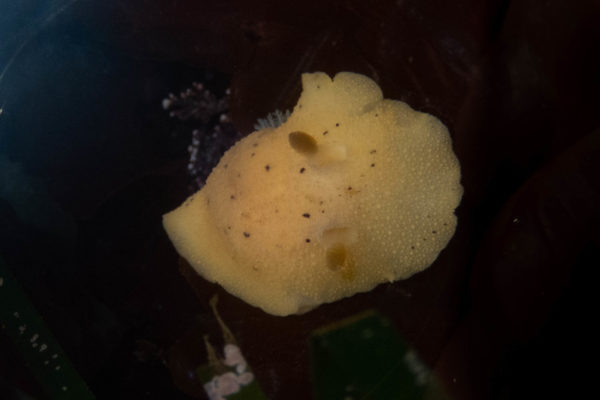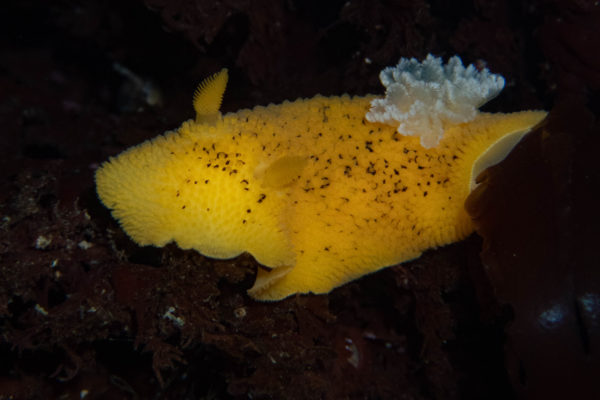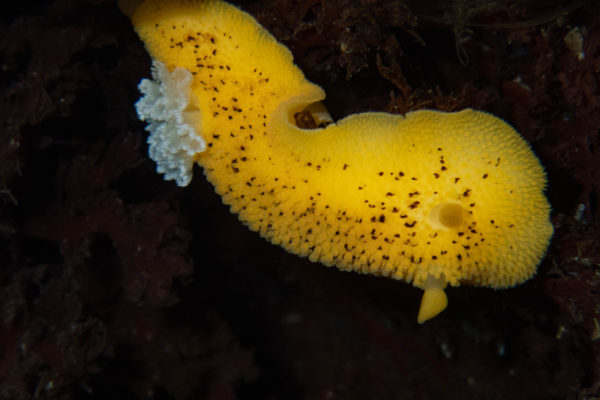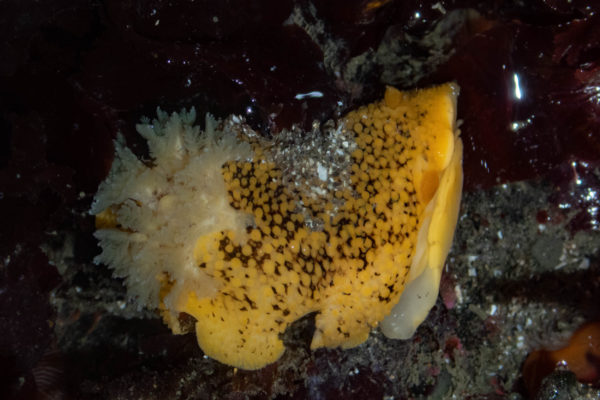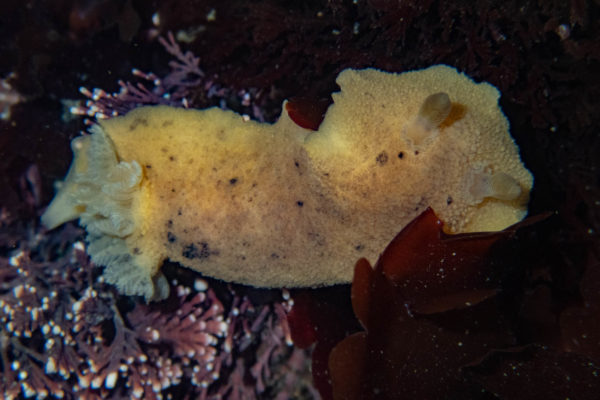Peltodoris nobilis is part of a group of nudibranchs that frequently get lumped together as ‘sea lemons’. We have several very similar species on the Pacific Coast including in the state of Washington.
Identification: A large, yellow nudibranch with six, white gills. Black/dark brown spots or splotches adorn the body but do not extend up the tubercles which cover the body.
Habitat: Intertidal zone, harbors, rocky shores
Natural History: The Sea Lemon smells like citrus thanks to the mucus chemicals they produce when disturbed. Their penis is unarmed, meaning there are no spines. They feed on sponges. According to Invertebrates of the Salish Sea, those sponges include “Axocielita originalis, Astylinifer arndti, Hymenamphiastra cyanocrypta, Lissodendoryx firma, Halichondria panicea, Haliclona permollis, and species in the genera Mycale, Zygherpa, Parasperella, and Prianos.”
Similar: Doris montereyensis is the most similar to Peltodoris nobilis but has yellow gills and the black spots are on the tubercles as well as on the body.
Observations: This species is reportedly common, but I don’t see it nearly as often at the similar Doris montereyensis around the Salish Sea region.

